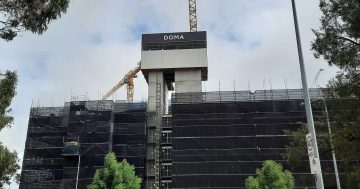
More and more people are buying townhouses and apartments. They deserve better protection. Photo: Tobias Wilden.
After reporting on property development and the thorny issue of defects for seven years, I am now part of the ongoing story about how to give buyers of new homes more security about their purchases.
Eighteen months into our residency at a new townhouse and apartment complex, the failure of the builder has led to owners having to make an insurance claim to cover the cost of any defects still not rectified.
We thought the builder, an experienced and reputable company, had dealt with all defects we could identify but, as ever, if only it were that simple.
A preliminary assessment by a structural engineer has found a host of defects in a sample of units and townhouses and common areas that could amount to millions of dollars worth of rectifications across the development.
Some are structural, which means they have to be fixed to be compliant, as well as the ubiquitous waterproofing issues.
Problems may not be apparent now, but the general experience is that they will emerge in the next few years if not dealt with.
It’s important to note, we’re happy with our new home and the complex generally. Overall, the builder did a good job and was very responsive afterwards.
Whether the pandemic interruptions or trades and material shortages contributed to the defects, we don’t know, but the key question is if the building was certified as ready for occupancy, how is it that just 18 months later, owners are coming to terms with a whole bunch of things they were unaware of?
It is such a familiar story, so why should I be surprised?
It’s systemic, the structural engineer and lawyer preparing our claim say.
And the finger is pointed at the private certifiers who are either too close to builders and developers or not up to speed when it comes to identifying major defects.
Despite years of campaigning by the likes of the Owners Corporation Network, the tightening of regulations, and the push to license developers, the system remains broken, leaving owners and strata managers having to pick up the pieces.
Self-regulation has been an abject failure, and using private certifiers is obviously not working.
They should be brought back into the public realm, at arm’s length from the building industry, and brought up to a standard, with oversight, that owners can rely on.
Those certifiers will no doubt cry foul, saying they are being smeared. But they are the gatekeepers. How can they defend work that so demonstrably has led to the general opinion that defects, and not just the run-of-the-mill kind that can be picked up easily, but those that can affect the safety and viability of a building and home are to be expected?
The bright side is that there is now a good chance that most of the defects now identified in our complex will be fixed before they become a problem, and owners’ costs will be limited to inspection reports, legal fees and excess.
But it is a scary time for owners, some, no doubt, with large mortgages, and there is no guarantee that claims will be accepted in full or that the owners corporation won’t have to strike levies to cover other costs.
It’s an issue that the ACT Government estimates costs the community $50 million a year in the strata industry, but the OCN says the cost is much more.
“Such remediation costs add more to the overall cost of home ownership than building to a quality standard from the outset – especially in the strata sector where defects can be multi-million-dollar problems and affect many owners and renters,” it says in its submission to the Developer Licensing Bill inquiry.
It also believes the period where the onus of proof falls on the developer/builder to demonstrate that a problem was not due to construction defects should be extended from two to 10 years.
The OCN also suggests that builders/developers should be forced to use the same architects and engineers throughout the entire life of a project.
But the buck stops with the certifiers, and a more rigorous regime should mean defects are minimised (builders are not perfect) and better managed.
The issue can’t be ignored, as more and more home buyers are looking for more affordable medium- and high-density housing.
They should be able to move into their new home safe in the knowledge that it is not going to cost them a bucket load more than what they have already outlaid, not to mention the uncertainty and worry.





















